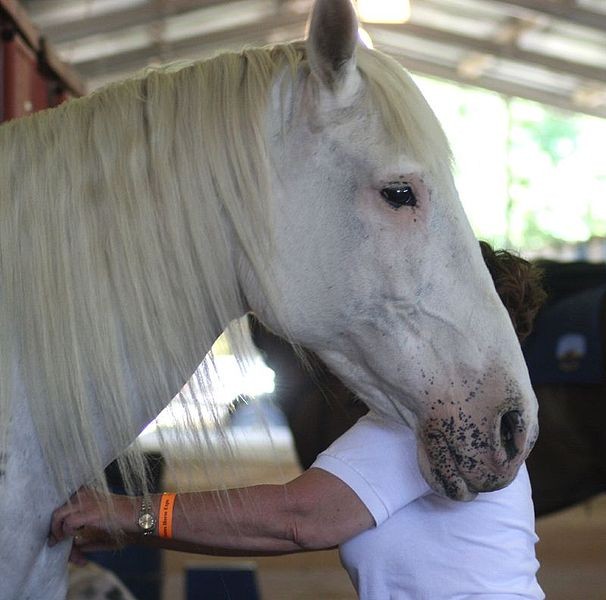
Vitiligo and melanoma in Pura Raza Español horses
The grey coat colour in horses is associated with a high incidence of melanoma and vitiligo-like skin depigmentation. Vitiligo is a non-contagious disorder characterised by progressive loss of skin pigmentation. Melanomas are usually pigmented neoplasms and can be malignant. Studies in humans indicate that there is a genetic link between vitiligo and melanoma.
In Pura Raza Español (PRE) horses the grey coat colour is prevalent, which is likely associated with the susceptibility to vitiligo and melanoma. The aim of this study was to determine the prevalence, environmental risk factors and genetic parameters for vitiligo and melanoma in PRE horses.
The data included 11,436 PRE mares and stallions from 36 countries. The inspections were carried out by 18 veterinarians that registrate horses for the studbook. Eye vitiligo score and nose vitiligo score were evaluated separately. Melanoma were detected by inspection and palpation. The environmental risk factors that were studied were: age, sex, coat colour and geographic area of the stud.
The results show that the prevalence of vitiligo on the nose was high (20.5%) and much higher in grey horses. The prevalence of vitiligo around the eyes (2.8%) and melanoma (1.6%) was lower and slightly higher in grey horses. Inbreeding was a significant risk factor in the whole population, in particularly for vitiligo around the eyes in grey horses. In grey horses heritability scores for vitiligo and melanoma were high, indicating that selection against the disorders is possible.
Expert opinion by Anouk van Breukelen
In future studies vitiligo scores for the perianal regions should be included, as they were not recorded. Additionaly, it would be interesting to investigate the degree of malignancy of melanoma in PRE horses to clarify to what extent it damages the wellbeing of PRE horses
> From: Sánchez-Guerrero et al., Equine Veterinary Journal evj.13067 (2019) . All rights reserved to EVJ Ltd. Click here for the online summary.


